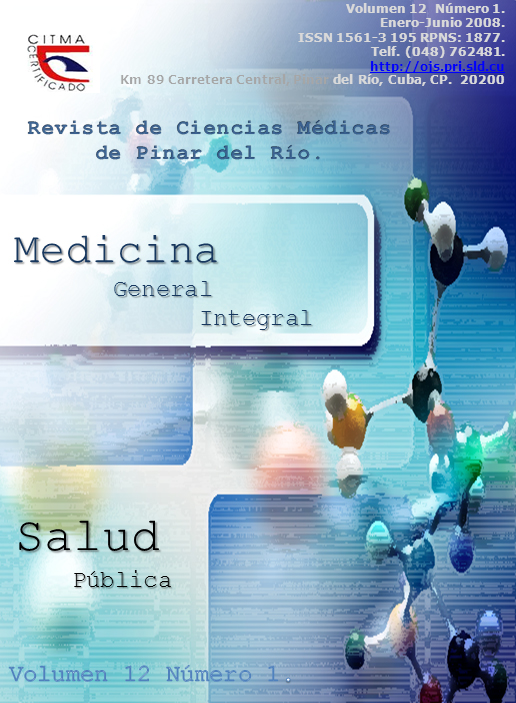Peritonitis meconial y fibrosis quística / Meconium peritonitis and cystic fibrosis
Abstract
La fibrosis quística (FQ) es una enfermedad génetica autosómica recesiva causada por más de 600 mutaciones conocidas del gen que codifica para la proteína de la membrana: Regulador de la membrana F.Q (CFTR). Es una enfermedad que en el período neonatal puede manifestarse por distres respiratorio, colestasis intrahepática e íleo meconial. Presentamos el caso de un recién nacido del sexo masculino, parto por cesárea, en quien se sospechó el diagnóstico de FQ. En ecografías prenatales se apreciaron signos de peritonitis meconial por íleo meconial. Fue intervenido quirúrgicamente, encontrando que gran cantidad de fibrina cubría todas las asas intestinales con adherencias, presentando una perforación en la unión yeyuno ileal, segmento ocupado por meconio duro y compacto, realizando íleostomía. Presenta empeoramiento clínico y hemodinámico, con íctero colestásico, distrés respiratorio que va agravando hasta presentar signos de shock séptico y fallo multiorgánico, falleciendo a los seis días de edad. El estudio anátomo-patológico post-mortem fue compatible con FQ.
Palabras clave: Fibrosis quística, íleo meconial, obstrucción intestinal, peritonitis meconial.
ABSTRACT
Cystic fibrosis (CF) is a genetic autosomal recesive disease caused by more than 600 known mutatins of the gene that codifies for the protein of the membrane: Regulator of the CF transmembrane (CFTR). It is a disease of the neonatalperiod that can be manifested by respiratory distress, intrahepatic cholestasis and meconium ileus. A case of amale newborn (throug a cesarean section delivery), suspecting the diagnosis of Cystic Fibrosis is reported. In prenatal echographies signs of meconium peritonitis due to meconium ileus was observed, the patient underwent a surgery where a great quantity of fibrin covering all intestinalloops with adherences showing a perforation inthe ileum jejune join was observed. The segment was filled with a hard andcompact meconium. An ileostomy was performed, then the patient presented a clinical and hemodynamic worsening with cholestatic jaundice and respiratory distress deteriorating his condition up to showing signs of septic shock and multiple-organ failure, dying at 6 days old. The post-mortem pathologic study matched with a cystic fibrosis.
Key words: Cystic fibrosis, meconium ileus, bowel obstruction, meconium peritonitis.
Downloads
How to Cite
Issue
Section
License
Authors who have publications with this journal agree to the following terms: Authors will retain their copyrights and grant the journal the right of first publication of their work, which will be publication of their work, which will be simultaneously subject to the Creative Commons Attribution License (CC-BY-NC 4.0) that allows third parties to share the work as long as its author and first publication in this journal are indicated.
Authors may adopt other non-exclusive license agreements for distribution of the published version of the work (e.g.: deposit it in an institutional telematic archive or publish it in a volume). Likewise, and according to the recommendations of the Medical Sciences Editorial (ECIMED), authors must declare in each article their contribution according to the CRediT taxonomy (contributor roles). This taxonomy includes 14 roles, which can be used to represent the tasks typically performed by contributors in scientific academic production. It should be consulted in monograph) whenever initial publication in this journal is indicated. Authors are allowed and encouraged to disseminate their work through the Internet (e.g., in institutional telematic archives or on their web page) before and during the submission process, which may produce interesting exchanges and increase citations of the published work. (See The effect of open access). https://casrai.org/credit/



